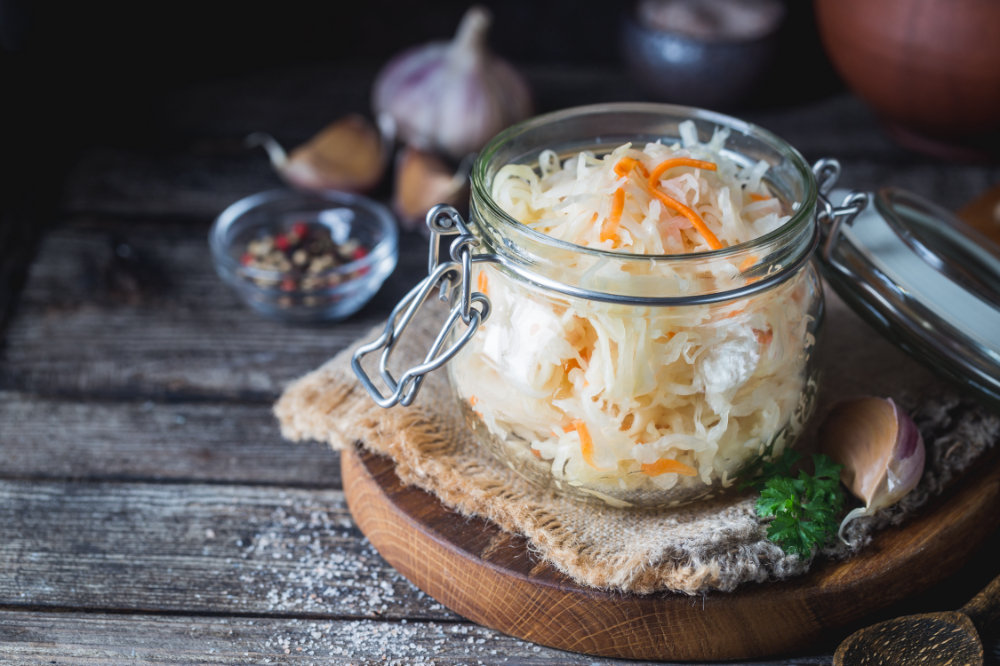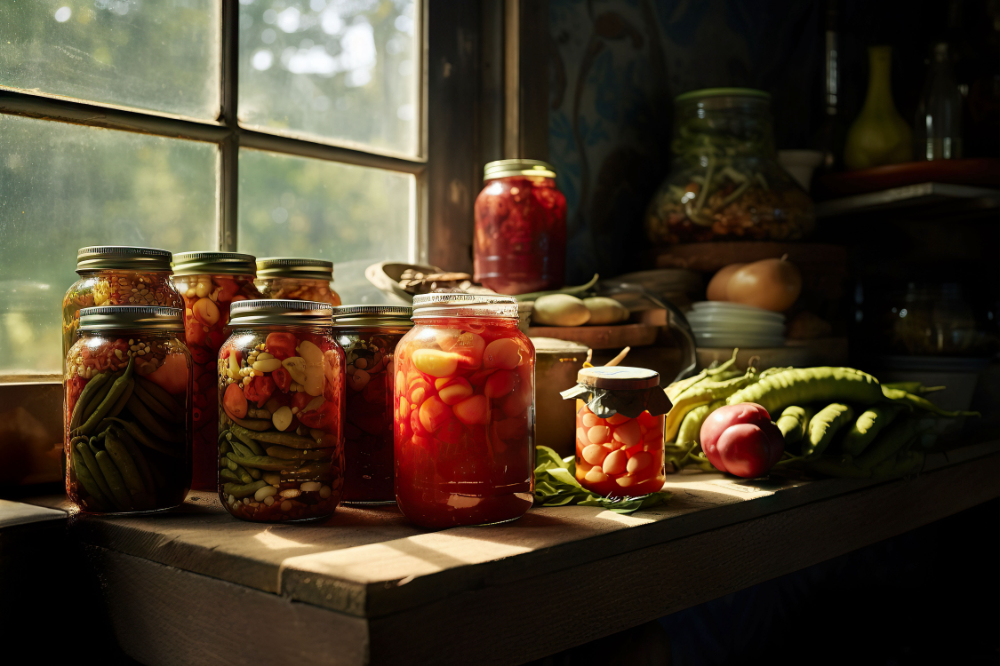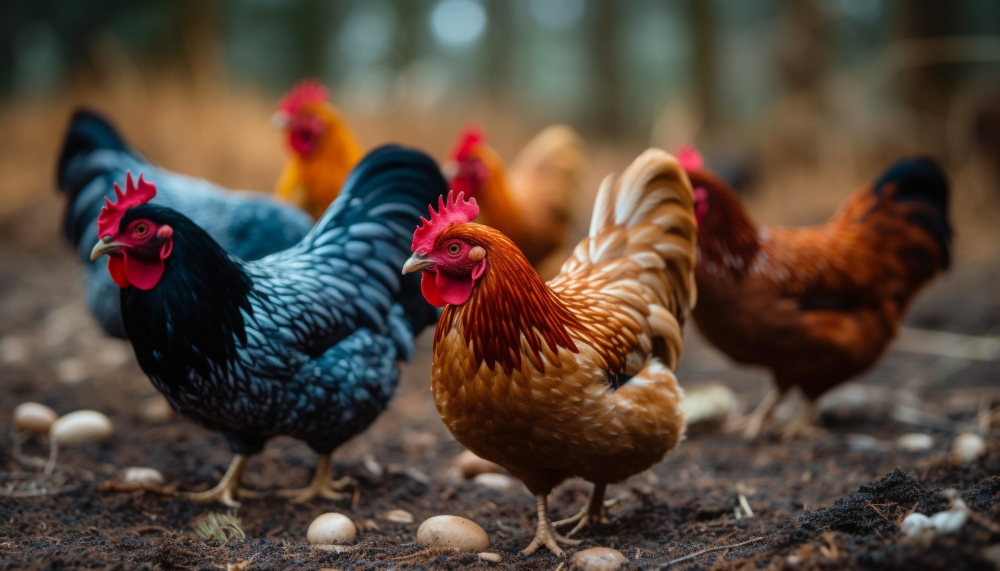Today we have refrigeration in our homes which keeps our food fresh. People long ago had to figure out how to make food keep longer. Fermentation is a useful survival tool for any prepper. This article will show you why fermentation is so important and how to use it to help you survive in the event of an emergency or disaster.
What is Fermentation?
Fermentation is a metabolic process by which organic compounds such as carbohydrates are broken down into simpler molecules. This process typically produces ethanol and carbon dioxide, as well as other compounds like lactic acid and acetic acid. Fermentation can occur either aerobically or anaerobically, meaning with or without oxygen present. Aerobic fermentation usually results in the production of more complex molecules than its anaerobic counterpart. Fermentation has many uses in food production, including alcoholic beverages (wine, beer, cider), bread-making, cheese-making, pickling, and much more. It is also used to produce biofuels such as ethanol and methane gas. In addition to its many culinary applications, fermentation is also important in pharmaceuticals and biotechnology.
The Importance of Fermentation in Human Civilization
Fermentation has been an important part of human civilization for thousands of years. It is a process that involves the controlled breakdown of carbohydrates into simpler compounds such as alcohol, lactic acid, and acetic acid. Fermentation is used to preserve food, create beverages such as beer and wine, and even make bread dough rise. Not only is fermentation a delicious way to preserve food, but it also preserves its nutritional value by breaking down complex carbohydrates into simpler sugars that are easier for our bodies to digest. Fermentation also encourages the growth of beneficial bacteria which can help us maintain healthy gut flora. In addition, fermentation can help create probiotics which can then be consumed to boost our immune system. As we continue to explore the world of fermentation, it remains an important part of many cultures around the world and will likely remain so for centuries to come.
History of Fermentation
We have it easy today, we have refrigeration in our homes. In the past people had to figure out how to make food keep longer. Fermentation has been used for centuries in food production and preservation, especially of wine, beer, cheese, yogurt, and pickles. In ancient times, fermentation was used to make bread leavened with yeast and the sourdough method of baking; it was also used to produce wines from grape juice. Over time, fermentation developed into its own culinary art form with numerous variations on recipes that included the use of herbs and spices. Today, fermentation is still widely used in food production and has also found uses in biotechnology and medicine. In modern times, it is also being studied for its potential health benefits due to the beneficial microbes produced during the process. Fermentation continues to be an important part of traditional cuisine as well as modern gastronomy.
Health Benefits of Fermented Foods
Fermented foods are becoming increasingly popular as a health food, due to their many health benefits. Fermentation is a process that utilizes beneficial bacteria and yeasts to produce beneficial enzymes, vitamins and other compounds. These beneficial compounds can help improve digestion, boost immunity, reduce inflammation and may even help protect against certain cancers. Additionally, fermented foods are high in probiotics which provide the gut with healthy bacteria that support digestion and promote overall wellness. Furthermore, consuming fermented foods can also help to balance the body’s pH levels which helps to regulate metabolism and improve nutrient absorption. With all these benefits, it’s no wonder why fermented foods are becoming an increasingly popular choice for those looking to improve their health!
You can ferment all kinds of foods, from vegetables to fruits. There are many benefits to fermenting food. Fermenting vegetables and fruits is a good way to preserve them. The benefits of fermented foods include:
- Reducing the risk of certain cancers
- Reducing the risk of cardiovascular disease
- Improving the function of the digestive tract
- Improving the immune system
- Improving the health of the skin and hair
- Increasing energy and mental clarity
- Improving the absorption of nutrients
- Promoting weight loss
- Reducing the risk of diabetes
- Reducing the risk of Alzheimer’s disease
- Reducing the risk of depression
- Reducing the risk of Parkinson’s disease
- Reducing the risk of arthritis
- Reducing the risk of allergies
- Improving the function of the thyroid gland
- Improving the function of the liver
- Reducing the risk of chronic fatigue
- Reducing the risk of multiple sclerosis
- Reducing the risk of asthma
- Reducing the risk of obesity
- Improving the function of the brain
- Improving the function of the heart
- Improving the function of the kidneys
- Improving the function of the pancreas
- Improving the function of the gall bladder
- Improving the function of the small intestine
- Improving the function of the stomach
- Improving the function of the large intestine
- Improving the function of the urinary tract
- Improving the function of the reproductive system
- Improving the function of the bones
- Improving the function of the skin
- Improving the function of the eyes
- Improving the function of the ears
- Improving the function of the nose and sinuses
- Improving the function of the mouth and teeth
- Fermented Foods Boost Your Immune System
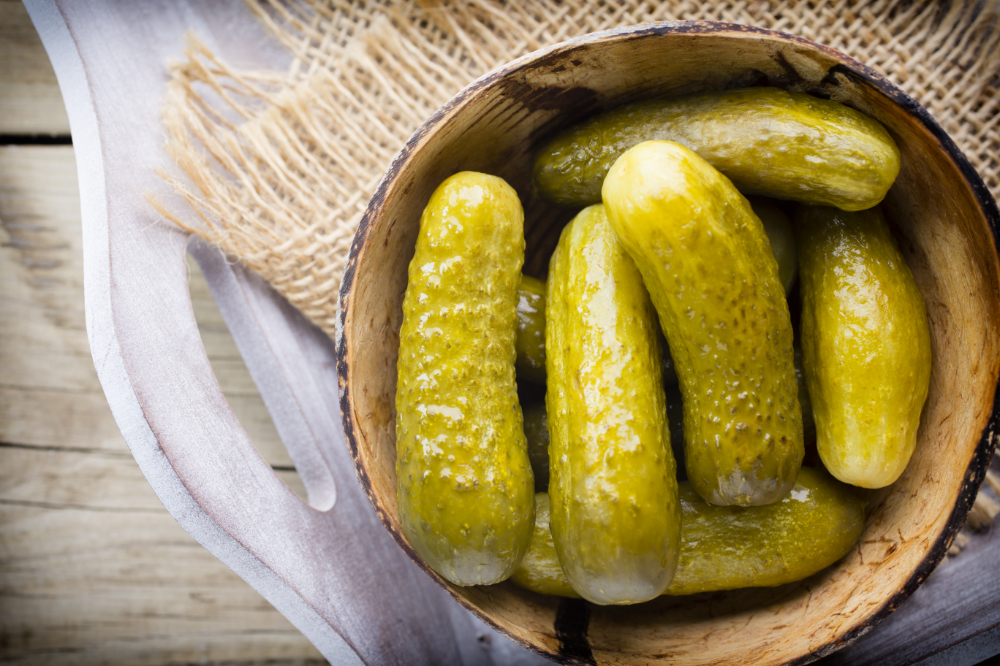
Fermented Foods Boost Your Immune System
Fermented foods offer a range of health benefits, including boosting your immune system. The probiotics produced and eaten help to strengthen your body’s ability to absorb essential nutrients from food and fight off infections and diseases. Additionally, fermented foods contain high levels of antioxidants which help protect cells from free radical damage and reduce inflammation throughout the body. Eating fermented foods on a regular basis can also improve mental clarity, enhance mood, and provide relief from digestive issues such as bloating or constipation. Incorporating fermented foods into your diet is an easy way to get more vitamins, minerals, and beneficial bacteria that promote overall health.
Types of Fermentation
Three basic forms of fermentation:
Fermentation is a process in which microorganisms, such as yeasts and bacteria, convert carbohydrates into alcohol or organic acids. It is one of the oldest and most widespread forms of food preservation.
There are three basic types of fermentation:
- lactic acid fermentation,
- alcoholic fermentation,
- acetic acid fermentation.
Lactic acid fermentation occurs when lactic acid bacteria break down carbohydrates in the absence of oxygen to produce lactate. This process is used in food production, such as in the production of yogurt, cheese, and sauerkraut. During lactic acid fermentation, glucose is broken down into pyruvate through glycolysis. The pyruvate then undergoes a series of reactions catalyzed by enzymes to form lactate. The lactate produced can then be further metabolized by other bacteria or used as an energy source by the lactic acid bacteria. Lactic acid fermentation helps preserve foods and improves their flavor due to the production of organic acids.
Alcoholic fermentation occurs when yeast breaks down sugar molecules to release alcohol and carbon dioxide.
Alcoholic fermentation is a two-step process that begins with glycolysis, which is the breakdown of one molecule of glucose into two molecules of pyruvate in the presence of enzymes and adenosine triphosphate (ATP). The pyruvate then undergoes a series of transformations catalyzed by enzymes, known as the Krebs cycle. This results in the production of smaller molecules such as acetaldehyde and ethanol. In this process, electrons are also released, which are processed through an electron transport chain to produce ATP. During alcoholic fermentation, NAD+ is converted to NADH + H+, which can be used by the cell for further biochemical reactions. This process produces energy for the cell and allows for further metabolism.
Acetic acid fermentation occurs when bacteria convert ethanol into acetic acid through the oxidation of acetaldehyde. Acetic acid fermentation is an important part of the production of vinegar, as well as other fermented foods such as sauerkraut and pickles. During acetic acid fermentation, a bacteria called Acetobacter aceti (or Acetobacter xylinum) is used. This bacteria oxidizes ethanol to form acetic acid. Acetic acid fermentation is also used in the production of specialty alcohols like sake and mead.
All three processes are essential for the production of a variety of foods from breads to cheeses to wines. Fermentation also plays an important role in food safety by preserving foods for extended periods of time and producing beneficial compounds like probiotics that can improve human health.
Be in the Know about ‘Good Bacteria’
Getting the Goods on ‘Good Bacteria’ is an essential step in understanding the role these microorganisms play in our health and wellbeing. Good bacteria, also known as probiotics, are found naturally in certain foods and can be supplemented through dietary supplements. We now know that they help to keep us healthy by maintaining a healthy gut flora, which helps to break down food and absorb nutrients more effectively. They can also help to reduce inflammation, improve digestive health, boost immunity and even help with weight loss. Good bacteria also have the potential to help in treating certain illnesses such as irritable bowel syndrome and antibiotic-associated diarrhea. With so many benefits, it’s important to get the goods on good bacteria and make sure we are taking steps to ensure that our bodies are getting enough of these helpful microbes.
Yeast Are Microorganisms
Yeast are microorganisms, single-celled fungi that are found in both nature and in human-made food products. Yeast play an important role in the production of bread, beer and wine, acting as a leavening agent to make these items light and fluffy. In addition, yeast can be used to produce other fermented products such as kombucha and tempeh. As well as being used for culinary purposes, yeast is also useful for scientific research as it is one of the most studied organisms due to its ability to survive in various conditions. Yeast can even be freeze dried so that it can be kept for long periods without spoiling or growing. Yeast’s ability to reproduce quickly makes them ideal for experimentation and study. Overall, yeast are incredibly versatile microorganisms with a variety of applications ranging from food production to scientific research.
Pasteur Demonstrates the Role of Yeast in Fermentation
In the late 1800s, Louis Pasteur demonstrated the role of yeast in fermentation. By studying the process of fermentation, he was able to prove that it was in fact caused by a living organism – yeast. He showed that when yeast is present and given a suitable environment, it produces alcohol and carbon dioxide as a result of its metabolic processes. This discovery paved the way for many advancements in food preservation and winemaking. Furthermore, his work on germs helped create vaccines for diseases like rabies which have saved countless lives over time. His discoveries changed the way we view science and biochemistry to this day.
Fermentation Products
Fermentation products are products created through the process of fermentation, which is a process that uses bacteria and yeast to convert carbohydrates, such as sugar and starch, into alcohol or organic acids. Common examples of fermentation products include beer, wine, sake, yogurt, cheese, breads, vinegar, tempeh and kombucha. Each of these foods has its own unique flavor profile based on the type of fermentation used. Fermentation can also be used to produce biofuels such as ethanol and butanol. In addition to food production, fermentation is also used in industrial processes such as the production of chemicals like citric acid and antibiotics. Fermentation products are healthy alternatives to processed foods because they contain probiotics and other beneficial compounds that can help maintain good digestive health.
Fermented Foods
Popular fermented foods
Fermentation is a process that has been used for centuries to preserve food and enhance its flavour. It involves the breakdown of sugars and starches in food by bacteria, yeasts or other microorganisms. Fermented foods are very popular and can be found in many different cultures around the world. Popular fermented foods include sauerkraut, kimchi, kefir, yogurt, miso, tempeh and pickles. Each of these foods has its own unique flavour, texture and health benefits. Sauerkraut is rich in probiotics which help support digestion; kimchi is a great source of vitamins A and C as well as antioxidants; kefir helps support the immune system; yogurt is high in calcium; miso is full of antioxidants and minerals; tempeh is an excellent source of protein; while pickles are packed with gut-friendly probiotics. All these fermented foods provide our bodies with essential nutrients and can be a delicious addition to any meal!
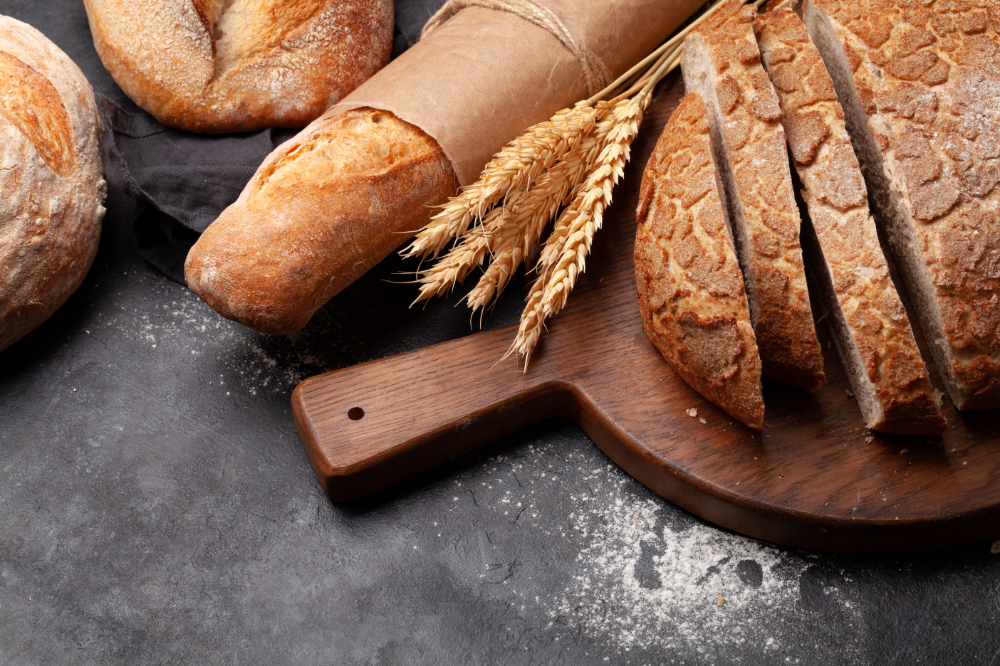
Bread | Dough Fermentation
Bread is one of the oldest and most popular foods in the world. It is made from flour, water and other ingredients that vary depending on the type of bread. The dough is mixed, kneaded and left to rise through a process known as fermentation. Fermentation is a chemical reaction caused by yeast or bacteria which breaks down carbohydrates in the flour, producing carbon dioxide and alcohol. The carbon dioxide makes the dough light and fluffy as it rises, while the alcohol evaporates during baking. In addition to giving bread its unique flavor, fermentation helps preserve it for longer periods of time compared to non-fermented breads. Breads have been around for thousands of years and will continue to be a staple food item in many cultures throughout history due to its delicious taste and nutritional value.
The Process of Making Bread
The process of making bread is quite simple, yet rewarding. First, measure out the ingredients; flour, yeast, salt and water. Then mix the ingredients until the dough is soft and pliable. Next, knead the dough on a flat surface for several minutes to make it more elastic. After that, let the dough rise in a warm place until it has doubled in size. Finally, shape the dough into loaves and bake them in an oven at 375 degrees Fahrenheit for approximately 30 minutes until they are golden brown and crusty on top. Enjoy your freshly made bread!
SourDough Fermentation
Sourdough fermentation is a process used to make bread and other baked goods with a distinctive flavor. The process involves allowing dough to ferment for an extended period of time, usually overnight, with the help of a sourdough starter. This starter consists of flour, water, and wild yeast or bacteria cultures that are added to the mixture. During the fermentation period, chemical reactions between the ingredients produce lactic acid and carbon dioxide gas bubbles, which give the dough its unique flavor. The sourdough starter can be reused multiple times over months or even years if stored properly in an airtight container in the refrigerator. Sourdough fermentation also enhances nutrition by breaking down some of the gluten proteins in wheat flour, making it easier to digest and more nutritious overall.
How to Make SourDough
Making sourdough is a fun and rewarding baking experience. To start, combine equal parts of flour and water in a bowl. Then add a teaspoon of active dry yeast or instant yeast to the mixture. Let it sit overnight to let the wild yeasts do their work and develop the flavor. The next day, mix in another cup of flour and some salt, then knead it until the dough is soft and pliable. Cover it with plastic wrap, place it in a warm area, and let it rise for about 8 hours until doubled in size. Once risen, shape the dough into loaves and place them on an oiled baking sheet. Bake at 375°F for 20 minutes or until golden brown. Enjoy your delicious homemade sourdough bread!
Sauerkraut is a Great Survival Food
Sauerkraut is a great survival food. It is made by fermenting cabbage with salt, and has been eaten for centuries as a way to preserve vegetables for long periods of time. Sauerkraut is packed with vitamins and minerals, such as vitamin C and calcium, making it an excellent source of nutrition in times of scarcity. The fermentation process also makes sauerkraut easier to digest than raw cabbage, so you can get more nutrition out of it. Sauerkraut is lightweight and easy to transport, making it ideal for camping or hiking trips. Furthermore, it stores well without refrigeration or special preservation techniques. Therefore, if you ever find yourself in a survival situation, sauerkraut is definitely worth stocking up on!
How to make Sauerkraut
Making your own sauerkraut is a simple process that requires minimal ingredients and equipment. You will need cabbage, salt and a large glass jar or crock to ferment the cabbage in. Start by slicing the cabbage into thin strips, then place it in a bowl and sprinkle with salt. Next, massage the cabbage for about five minutes until it starts to soften and release its juices. Once the juice has been released, put the cabbage into the jar or crock and press it down firmly with your hands or a wooden spoon so that more juice is released from the cabbage. Finally, cover the jar or crock with a lid and let it sit in room temperature for three to four weeks until it ferments and becomes sauerkraut. Enjoy!
The Process of Making Pickles
Pickles are a popular snack and condiment that have been around for centuries. The process of making pickles starts with selecting cucumbers, which need to be firm, fresh and free from blemishes. Once the cucumbers have been chosen, they can either be cut into slices or left whole. Next, a brine solution is made by combining vinegar, salt and sugar in water. The cucumbers are then placed into the brine for several days or weeks, allowing them to ferment. During this time, spices such as dill and garlic can also be added to the brine for flavor. After fermentation is complete, the pickles can either be canned or stored in jars in a cool area until ready to eat. Pickles are an easy snack to make at home and they can provide a delicious crunchy addition to many dishes!
More On Yogurt, Kefir, and Probiotics
Yogurt, Kefir, and Probiotics are all great sources of beneficial bacteria that can help keep your gut healthy. Yogurt is made by fermenting milk using a culture of lactic acid bacteria, which produces a tart flavor. It contains probiotics, which are beneficial for helping to maintain the balance of good bacteria in your digestive system. Kefir is another fermented product made from a combination of milk and other ingredients like water or juice. It contains more probiotic strains than yogurt, making it even more beneficial for gut health. Probiotics supplements are also available as capsules or powder that you can add to your food or drink to help boost the amount of beneficial bacteria in your gut. All three options can provide a range of benefits for your digestive health and overall wellbeing.
The Process of Making Yogurt
Making yogurt is a relatively simple process that produces a delicious and healthful product. Generally, the process begins with heating milk to about 180°F. This helps to kill any bacteria or other microorganisms that may be present in the milk. Then, the milk is cooled to between 110°F and 115°F before adding a starter culture of active yogurt bacteria. These bacteria convert the lactose in the milk into lactic acid, giving the yogurt its distinctive tart flavor. The mixture is then incubated for several hours at a temperature between 100°F and 115°F. Finally, it can be flavored with sugar or fruit, or simply enjoyed as-is. Homemade yogurt is an excellent source of calcium and protein, making it an ideal snack or breakfast food.
Fermented Drinks
What is Kefir and How to Make it?
Kefir is a fermented milk drink that has been around for centuries. It is made by adding kefir grains to milk, which contain beneficial bacteria and yeasts that ferment the milk and produce a tart, yogurt-like beverage. Kefir is rich in probiotics, vitamins, minerals, and beneficial enzymes that can help boost your immune system and improve digestion. To make kefir at home, you need kefir grains, milk of any kind (dairy or non-dairy), a bowl or jar with a lid, a strainer, and a spoon. Begin by adding the kefir grains to the milk in the bowl or jar. Then cover it with the lid and leave it at room temperature for about 24 hours until it thickens up. After this time strain the mixture using the strainer and spoon. Save the grains for the next batch of Kefir you make. The result will be creamy kefir which you can enjoy plain or add flavors like fruits or honey to it. Enjoy!
What is Kombucha and How to Make it?
Kombucha is a fermented tea beverage that originated in China. It is made by adding a mixture of bacteria and yeast to sweetened tea, which ferments the drink. The resulting beverage has a slightly sweet-sour taste, and contains probiotics and beneficial enzymes which may have health benefits. To make Kombucha, start by boiling 1 liter of water. Add 4 teaspoons of tea, 2 tablespoons of sugar and let it steep for 10 minutes. When finished, strain out the tea leaves and pour the liquid into a large glass container. Next, add 1/4 cup of pre-made Kombucha or a “starter” culture from another batch that you previously made. Cover the container with a cloth and secure it with an elastic band or string. Place the container in a warm spot (75°F to 85°F) for 7 to 10 days to allow fermentation to occur. After this time period, remove the starter culture and enjoy your homemade Kombucha!
Cocoa and Coffee Fermentations
You may not have known Cocoa and Coffee Fermentations are two processes that have been used for centuries to produce some of the world’s most popular drinks. Cocoa fermentation is necessary to bring out the chocolate flavor from the cocoa beans, as well as to reduce bitterness and astringency. Coffee fermentation helps enhance the natural flavors of the coffee beans. During cocoa fermentation, the beans are left in heaps for several days until they reach an ideal temperature and moisture level. The beans are then washed and dried before being shipped off to be processed into chocolate.
For coffee fermentation, a mix of yeast, bacteria, and sugar is added to the beans to promote enzymatic activity which helps extract the unique flavors of each bean variety. After this process is completed, the beans are dried and roasted to create flavorful coffees that we enjoy around the world today.
There may be an issue with the proper drying of some brands of coffee beans, producing moldy beans and therefore moldy coffee, which can affect your health. Dave Asbury developed a coffee called Dangerous, which is without mold.
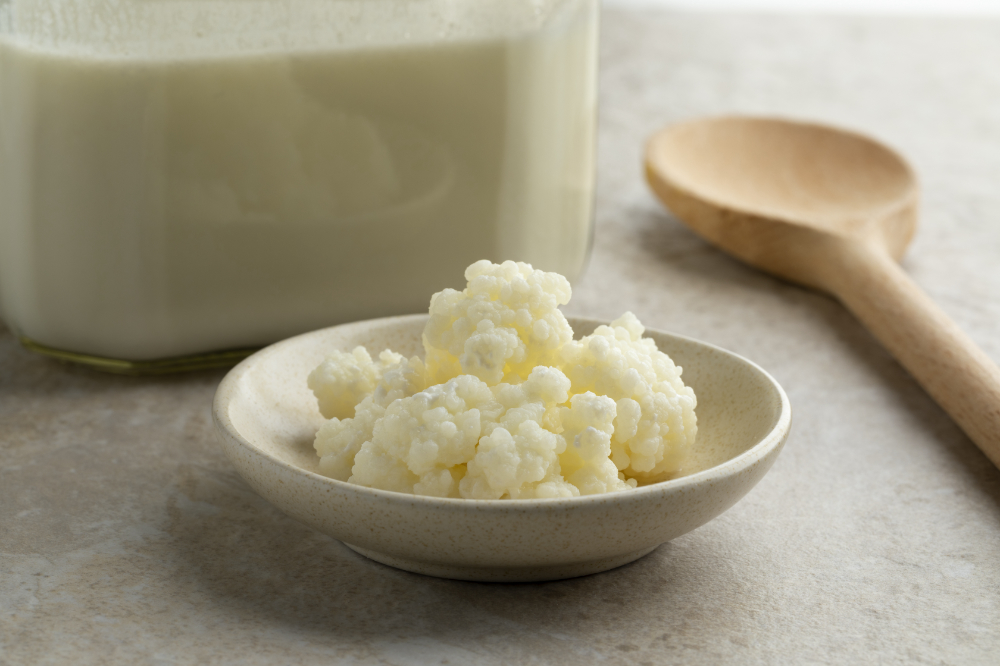
The Process of Making Kefir
Kefir is a fermented milk drink that originated in the Caucasus Mountains that is made by adding kefir grains to cow, goat or sheep’s milk. The kefir grains are a combination of bacteria and yeast that transform the sugars in the milk into lactic acid. This creates a sour, yet refreshing, drink that is packed with probiotics and vitamins. To make kefir, one simply adds the grains to the milk and seals it up with an airtight lid. The process can take anywhere from 12-48 hours depending on how thick one wants their kefir to be. After this time has passed, the mixture should be strained through cheesecloth or a strainer to remove the grains and leave behind only liquid kefir. This can then be enjoyed fresh or stored in an airtight container for later consumption.

Fermentation, Beer, and Biofuels
The fermentation process is an important part of the production of many different types of beverages, including beer and wine. During fermentation, yeast breaks down sugar molecules in the liquid and produces alcohol as a byproduct. This process also releases carbon dioxide, giving many fermented beverages their “fizzy” quality.
The Science Of Making Great Beer
The science of making great beer is complex, but ultimately rewarding. Brewing beer requires a combination of art and science. It starts with selecting the perfect ingredients–malted barley, hops, yeast, and water–and then carefully combining and controlling these elements to create a unique flavor profile. The brewing process involves boiling the wort mixture of malted barley, hops, and water; fermenting this mixture with yeast; aging the beer in tanks or barrels; carbonating it; and finally packaging it for consumption. Temperature control throughout the brewing process is paramount in order to create a quality product that has the desired aroma, taste, color, and alcohol content. Additionally, brewers must have an understanding of food chemistry in order to properly combine the ingredients to produce their desired flavors. With careful planning and attention to detail, brewers can craft great beers that bring joy to those who partake in them.
The Process of Making Beer
The process of making beer is a complex yet rewarding endeavor. It begins with malted barley, which is soaked in water and heated to allow for the enzymes to break down the starches into fermentable sugars. The mixture is then boiled, cooled, and transferred to a fermentation vessel where yeast is added. The yeasts then convert the sugars into alcohol and carbon dioxide. After fermentation, the beer is filtered, bottled or kegged, and sometimes pasteurized before it’s ready for consumption. Throughout this entire process, brewers add various ingredients such as hops or spices to give each beer its own unique flavor profile. With patience and attention to detail, brewers can craft flavorful beers that any beer enthusiast would appreciate.
Ethanol Fermentation
Fermentation has been used for centuries to preserve food and beverages, but it can also be used to produce biofuels such as ethanol and biodiesel. Through this process, organic materials such as plants and algae are converted into energy-rich fuels that can be used instead of fossil fuels. The use of fermentation to create biofuels is an important step towards reducing our dependence on fossil fuels and protecting the environment.
Ethanol fermentation is a process of converting sugar into ethanol and carbon dioxide. This process is used in the production of alcoholic beverages, fuel, and other products. During this process, yeast breaks down sugar molecules into ethanol and carbon dioxide. The carbon dioxide is released as a byproduct while the ethanol remains in the mixture. This process does not require oxygen to take place, which makes it an important part of food production. In addition, ethanol fermentation is used to produce lactic acid in dairy products like yogurt, cheese and sour cream. Overall, ethanol fermentation is an essential process for many industries that rely on producing alcohol and other products from sugar molecules.
In Conclusion
It is important to note that the beneficial effects of fermented foods are not restricted to the gastrointestinal tract. Fermented foods have been used for thousands of years to maintain good health and prevent disease. Fermentation is an ancient method of preserving food. The process of fermentation is the reason why we can eat fermented foods today. When we consume fermented foods, we are consuming the byproducts of fermentation. These byproducts include live bacteria, enzymes, and other nutrients. These nutrients help the body fight against infection, help in digestion, and support the immune system.

